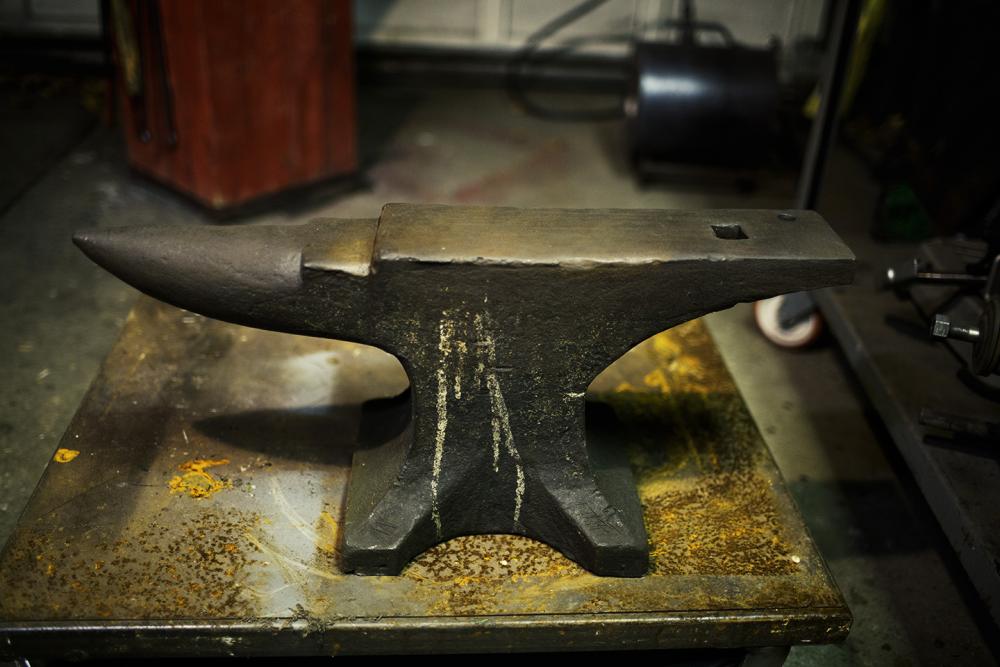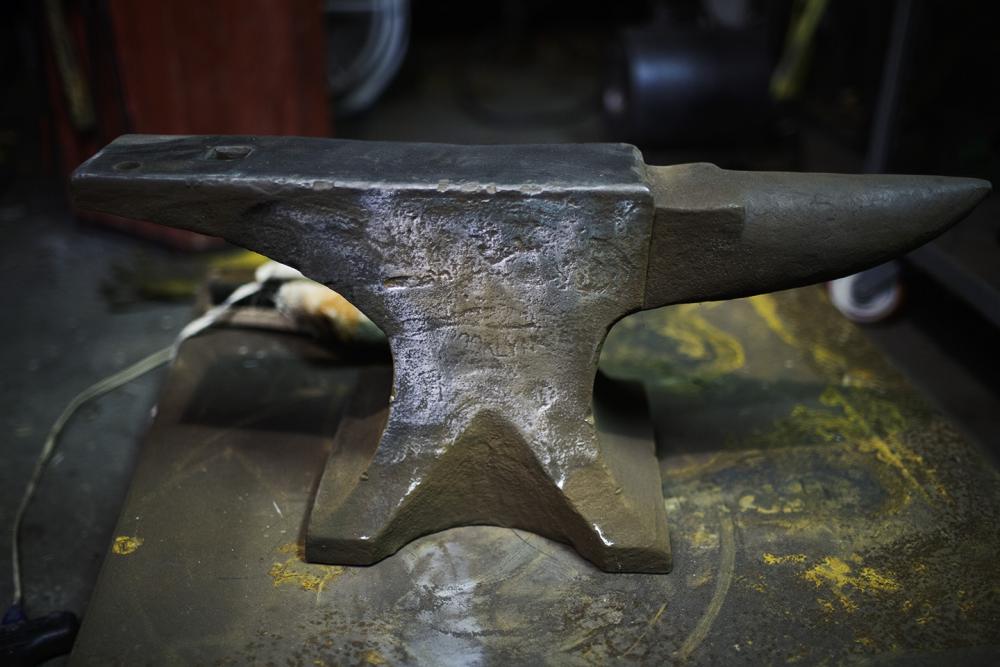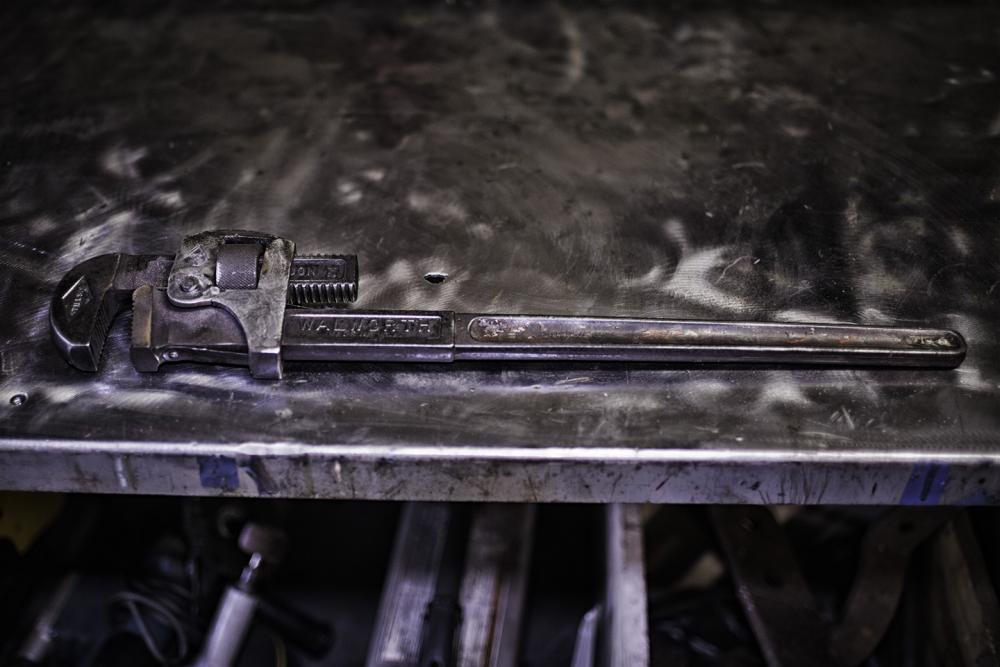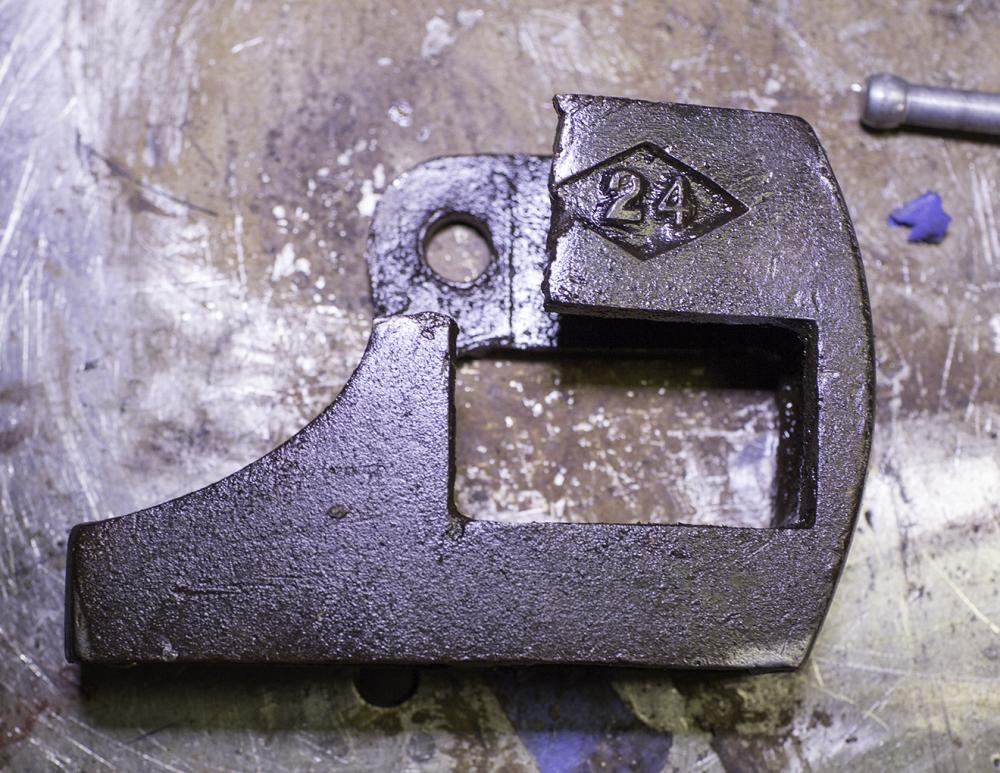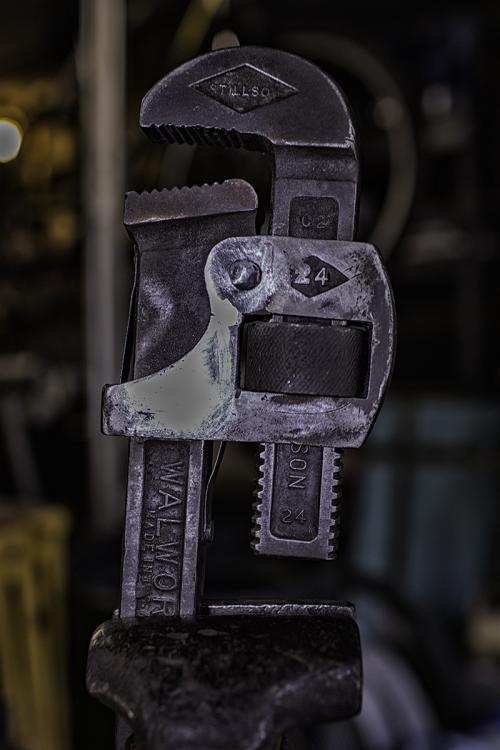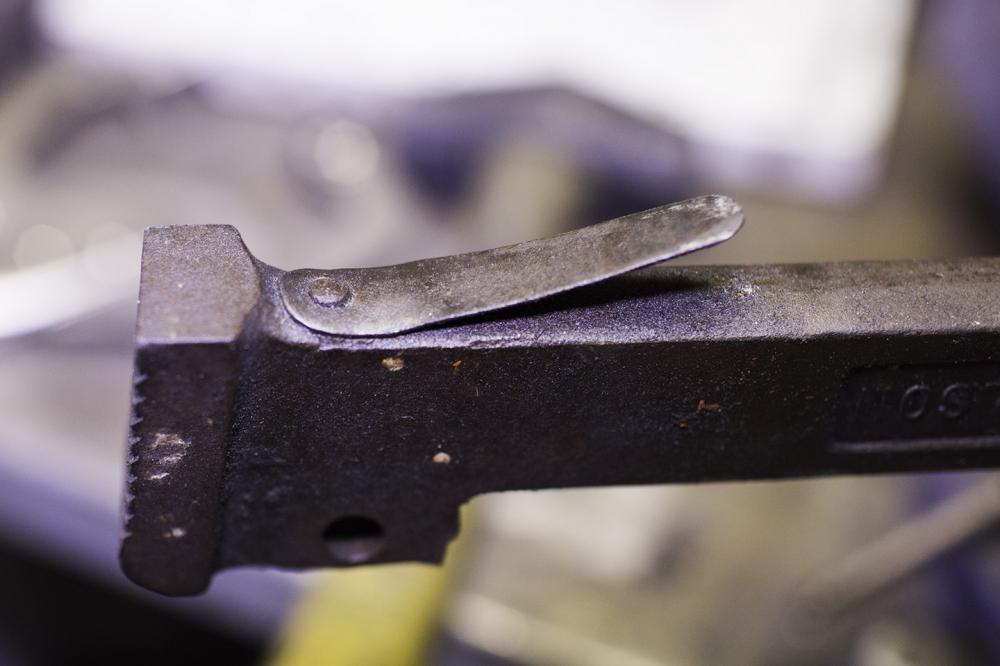-
Posts
65 -
Joined
-
Last visited
Content Type
Profiles
Forums
Articles
Gallery
Downloads
Events
Everything posted by GoodThing Factory
-
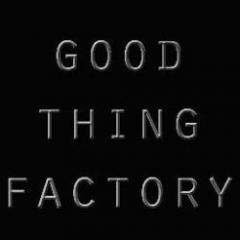
Hay Budden Date?
GoodThing Factory replied to GoodThing Factory's topic in Anvils, Swage Blocks, and Mandrels
400 ... not the best deal on the planet but a fair price. i found it on bidspotter - it's an auction site for commercial industrial liquidations. anvils rarely come up for auction it's mostly heavy industrial equipment so you're not competing w a lot of people like you are on ebay. i just set up an alert for anvils and one close to me came up so i went for it. that said, removal / shipping can be really expensive - they'll get you for rigging fees and commercial shipping which adds up fast. and once you win the auction that's that ... if shipping adds another 500 it's your problem so research before you bid. thanks for mentioning. -

Hay Budden Date?
GoodThing Factory replied to GoodThing Factory's topic in Anvils, Swage Blocks, and Mandrels
nope, i've also seen some w markings on the back foot but nothing there either. does seem like this had been sitting for a long time - the rust formed a thick even patina -
I got lucky and got a great deal on this 176# HB ... I'm curious if there's any way to determine date since just about all the markings have warn off. Any thoughts? Thanks
-
i'm also very new to smithing having been at it for a little over a year. like artfist said ... I've found the best way to learn is by making the tools you'll need to make other things... tongs, punches, drifts, hardies like cut offs and bottom swages, chisels (he mentioned hammers but i'm in the midst of forging my first 3.5lb rounding hammer and it's a pretty big undertaking esp w/o a power hammer) ... aside from getting a good foundation in the basics you'll end up with a set of tools that would have cost a small fortune to buy. Going through the ABANA controlled hand forging series has also been useful https://www.abana.org/resources/chf.shtml the link is text lessons but there's plenty of videos on youtube. have fun
-

12 by 16 primitive shop build (midwest)
GoodThing Factory replied to Yuppiejr's topic in Building, Designing a Shop
looks fantastic - nice work -
as always there's tons of conflicting info out there. i'm making a square edge hardy tool mainly for tenons and lap joints from a piece of track. since there's really no way of knowing what the steel is for sure any thoughts on how to heat treat. after the time it's taking to forge a 4" section into what i need it would really suck if the thing cracks from being too brittle. any suggestions or a link would be great ...thanks
-
nice find ... i'm actually about to sell my smaller version having switched to oxy / ace. the only piece of advice i can give you is related to the compressor ... regardless of the size of the tank make sure it will push the proper scfm, mine required 5.2@ 80psi. i found there's lots of compressors out that that have large tanks with high psi but only push out about 4.5, without adequate pressure you wont get max performance. that said, you're already cutting rail track so you prob have it figured out. off topic, but since i'm about to list mine ... if you dont mind and its not impolite to ask ... how much did you pay for yours? and if there's anyone near my area in the market (westchester county, ny) i'm selling a plasma cutter ... hypermax 30 in good condition - doesn't look out of the box works well.
-
picked up a camshaft a while back and its stamped "A3" - anyone know if that means it's A3 steel? a couple of pics for reference ... thanks
-

Acetylene Heating Tip
GoodThing Factory replied to GoodThing Factory's topic in Welding/Fab General Discussion
thanks, yea, that's what i thought. i already have propane tanks for my forge so it probably make sense. -
I'm new to using a oxy fuel . I bought a MIller Smith medium duty kit with a 120lb oxy and 80lb Ace tank. based on the 1/7 rule I'm good cutting with smith tips for up to 5" which is more than I'll prob ever need. But I'd really like to use the heating attachments which according to Smith even the smallest draws 28 SCFH meaning i'd need 200lb ace tank to use even the smallest tip - anything bigger and you're manifolding tanks which is expensive and a bit more than i bargained for. question - what happens if were to draw gas at more than the recommended rate - is it dangerous?
-

Mig welder suggestions
GoodThing Factory replied to Michael Cochran's topic in Welding/Fab General Discussion
I've had a lincoln 140c for maybe 10 years and weld 3/8 & 1/2" plate to use for jigs which take a pretty good beating all the time - if you prep the joint and give it a 2nd pass the machine will perform well above spec. i think the kit cost about 800 back then. i think you'd be pressed to find the quality for less money -

ball bearing test 120%
GoodThing Factory replied to NoName's topic in Blacksmithing, General Discussion
huh, i thought you're supposed to bounce the anvil off the ball bearing? -

Side Blast Charcoal Forge Build?
GoodThing Factory replied to GoodThing Factory's topic in Solid Fuel Forges
i wear my oddness as a badge of honor ... -

Advice on quitting my job for forging
GoodThing Factory replied to Jarntagforge's topic in Everything Else
in addition to having an anvil and a few hammers i'm also and primarily an executive recruiter (headhunter) - have been for more than 25 years. i'm not going to give you an opinion - mine is no more valid than the ones shared above - but i have a story ... about 15 years ago i got a call from a young man who was probably no more than 18 looking for a job as a software developer for an internet company. he actually had some experience with what at the time was a "hot" internet company - he was one of these kids who started programming in middle school. i listened to him for a few minutes ... to be candid, he was obnoxious, had an incredibly high opinion of himself and virtually no self - awareness. When he stopped talking I asked if he wanted my opinion - he said sure. i told him to go back to school, that while he may find another job with an interesting company in the short term he needed to think about five years from now when he'd be some guy with a bit of experience and no degree who had worked for a bunch of failed companies. going to college was the prudent choice and this idea of finding some company where he'd make life changing money was a fantasy with the same probability as winning the lottery. we hung up and i didn't give the call a second thought - while it was a unique conversation in some ways, i talk to 1000's of people a year so this one just faded into the background. by now you know there's an interesting end to the story ... which, of course, there is. turned out that kid who i told to be "smart" and go back to college was one of the first 10 people hired at facebook ... he's worth billions. yes, billions with a B. i'm not suggesting you'll become the facebook of blacksmithing or that you give up your day job but there's a lesson in there. this young man was convinced he was going to be successful and he was passionate about what he wanted to do - all the logic in the work wasn't going to deter him. if there's anything i've learned in my years as a recruiter it's that successful people are doing what they love. no, doing what you love doesn't guarantee success but i can't think of a successful person who isn't passionate about what they do. if you know in your heart smithing is it for you then you already know you're off to sweden. that said, it's a tough road and a big risk so if you've got some doubts maybe best not push all your chips in the pot on one hand. -

Side Blast Charcoal Forge Build?
GoodThing Factory replied to GoodThing Factory's topic in Solid Fuel Forges
i would actually love to do something like and years ago when i first got the thought of biulding a forge the only type you'd see on the net were in ground which for me isnt possible since i'm in a pretty densely populated suburb just north of nyc. as it is i'm a bit of oddity to my neighbors, if i built a fire pit in the backyard i think the cops would show up in about 10 minutes thanks - will do -

Side Blast Charcoal Forge Build?
GoodThing Factory replied to GoodThing Factory's topic in Solid Fuel Forges
got it, thanks - should have listened to you a year ago when you warned me off a bottom blast w 2" black for charcoal -

Side Blast Charcoal Forge Build?
GoodThing Factory replied to GoodThing Factory's topic in Solid Fuel Forges
thanks charles - any chance you can point me to a picture of classical side blast. i've seen lots of washtubs but not so many of what you describe as "classical" - appreciate it if you have a minute, -

Side Blast Charcoal Forge Build?
GoodThing Factory replied to GoodThing Factory's topic in Solid Fuel Forges
thanks john -
the first forge I made was a bottom blast brake drum ... 2" black pipe, truck brake drum with a hair dryer. to make a long story short there's lots of things I want to improve on it now that i know just a little something but I'm thinking I'd be better off just starting from scratch. my understanding is a side blast is better for charcoal ... this could be one of those stupid questions but here goes ... having looked at "tub" forges the pipe comes in from the side but the holes are positioned so the air still blows up into the fire pot- is this considered "side blast" or does side blast mean the air from the blower is coming in horizontally from the side of the fire pot? sorry, in advance if this topic has been covered in the past ... there was one thread that looked like it might have the answer but the image links were broken. appreciate the help.
-

Riveting into Solid Stock?
GoodThing Factory replied to GoodThing Factory's topic in Problem Solving
well ... for those of you who like to know the end of a story ... turns out whatever this wrench was made from is the hardest metal i've run into - when i tried to drill into it i barely made a scratch and i'm using a floor drill press with a decent set of chicago latrobe bits which easily cuts through spring steel. so after all of your helpful comments i ended having to spot weld the spring onto the neck ... let it cool and then tempered the welded spot. so far so good but who knows it could def crack after a some use. that said, i paid $2 for a nice 24" wrench that i'll def get some use out of and i learned about drive bits. thanks all -

Riveting into Solid Stock?
GoodThing Factory replied to GoodThing Factory's topic in Problem Solving
thanks guys ... sounds like drive rivets is the way to go. i've got the right size tap and die so should be pretty easy to make something from a small piece of round stock that'll do the trick. much appreciated. -

Riveting into Solid Stock?
GoodThing Factory replied to GoodThing Factory's topic in Problem Solving
thanks ... there's no hole now, i did dril about 1/4 in hole before welding since i figured the trying to spot weld onto the surface of the wrench was just going to incinerate the spring. the weld help fine but the spring was about as flexible as glass at least near the weld. so the concept is heat the wrench so it expands a bit, set the rivet and then when the wrench cools the hole shrinks to secure the rivet? any reason i cant just drill a new hole to place the rivet? and, i assume the rivet is cold when i set into the wrench? -
I picked up an old Walworth 24" wrench that needs some rehab - it's a great piece that cost me just about nothing so worth some time. One of the tension springs is missing I've forged and tempered a piece of spring steel to the right size but I can't figure out how to attach to the neck of the wrench - looks like the intact original side was riveted but I'm at a loss as to how to place a rivet that will hold in solid steel. Seems that w nothing to grab onto in the hole the rivet will fall out. I've tried spot welding but 2 tries have cracked the spring since the heat of the weld loses the temper and cracks right above the weld after just a bit of flexing. I'm sure there's a pretty simple solution but havent been able to find an answer Image of the intact side below. Thanks
-
thanks for the ideas ... i suspect, based on feedback and an image search, these pieces were used as counterweights not subject to any stress so likely recycled and no one really cared what composition of the metal. i've made a couple of bottom fullers from them and so far so good but i guess forging a hammer from this stuff isnt a good idea.
- 6 replies
-
- msytery metal
- metallurgy
-
(and 1 more)
Tagged with:

